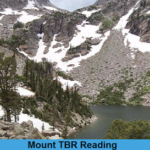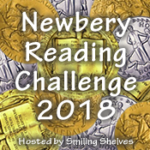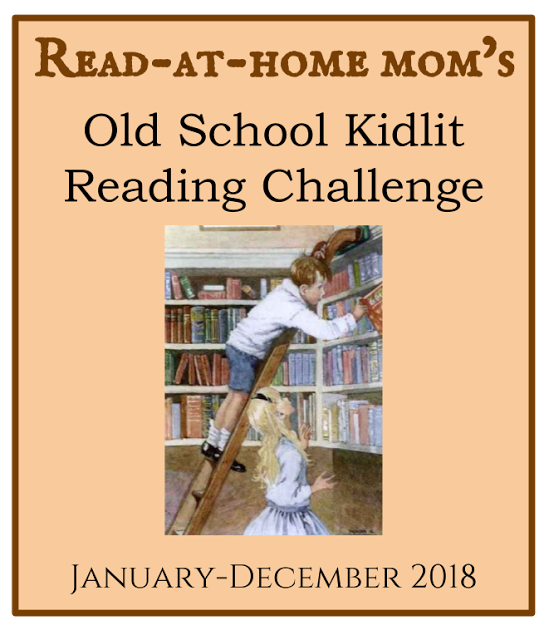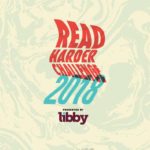It’s time to look back at those 2018 Reading Challenges and see how they went!
(Spoiler: They mostly did not go all that well.)
Mount TBR (hosted at My Reader’s Block for 2018)
Goal: 24 books
Result: 8 books (33.3%) – I read a lot of library books this year!
- Geek Girls Unite: How Fangirls, Bookworms, Indie Chicks, and Other Misfits Are Taking Over the World by Leslie Simon
- Moriarty (Sherlock Holmes, #2) by Anthony Horowitz
- The Grownup by Gillian Flynn
- The Dollhouse by Fiona Davis
- A Study In Lavender: Queering Sherlock Holmes edited by Joseph R.G. DeMarco
- The Daylight Gate by Jeanette Winterson
- Shadows Over Baker Street edited by Michael Reaves and John Pelan
- Kindred Spirits: An Anthology of Gay and Lesbian Science Fiction Stories edited by Jeffrey M. Elliot
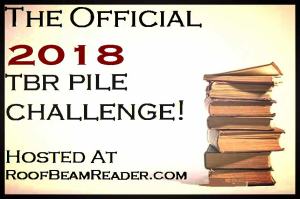
The Official 2018 TBR Pile Challenge at Roof Beam Reader
Goal: 12 books
Result: 4 books (33.3%)
Read:
- Geek Girls Unite: How Fangirls, Bookworms, Indie Chicks, and Other Misfits Are Taking Over the World by Leslie Simon – Reviewed: January 3
- The Daylight Gate by Jeanette Winterson – Reviewed: October 17
- A Study In Lavender: Queering Sherlock Holmes edited by Joseph R.G. DeMarco – Reviewed: April 12
- Shadows Over Baker Street edited by Michael Reaves and John Pelan – Reviewed: December 21
Unread:
- The Time of Our Singing by Richard Powers
- Mastermind: How to Think Like Sherlock Holmes by Maria Konnikova
- The Wand in the Word: Conversations with Writers of Fantasy edited by Leonard S. Marcus
- Making a Literary Life: Advice for Writers and Other Dreamers by Carolyn See – I did start this one, but it was a DNF.
- The American Way of Eating: Undercover at Walmart, Applebee’s, Farm Fields and the Dinner Table by Tracie McMillan – It turned out this was not actually on my shelves. Oops.
- Listening for Madeleine: A Portrait of Madeleine L’Engle in Many Voices by Leonard S. Marcus – I started this, but then put it aside for so long I think I’m just going to start again.
- Sherlock Holmes of Baker Street by William S. Baring-Gould
- Weight: The Myth of Atlas and Heracles by Jeanette Winterson
- Shakespeare: The World as Stage by Bill Bryson (alternate)
- A Family of Readers: The Book Lover’s Guide to Children’s and Young Adult Literature by Roger Sutton and Martha V. Parravano (alternate)
Newbery Reading Challenge at Smiling Shelves
Goal: Konigsburg (75+ points)
Result: 19 points (25%) – I got a bit sidetracked on this one.
- A Wrinkle in Time by Madeleine L’Engle: 3 points (Newbery Winner, 1963)
- Hello, Universe by Erin Entrada Kelly: 3 points (Newbery Winner, 2018)
- Sounder by William Armstrong: 3 points (Newbery winner, 1970)
- Ella Sarah Gets Dressed by Margaret Chodos-Irvine: 1 point (Caldecott Honor, 2004)
- Grand Canyon by Jason Chin: 1 point (Caldecott Honor, 2018)
- A Different Pond by Bao Phi: 1 point (Caldecott Honor, 2018)
- Big Cat, Little Cat by Elisha Cooper: 1 point (Caldecott Honor, 2018)
- Long Way Down by Jason Reynolds: 2 points (Newbery Honor, 2018)
- Piecing Me Together by Renée Watson: 2 points (Newbery Honor, 2018)
- Wolf in the Snow by Matthew Cordell: 1 point (Caldecott winner, 2018)
- The Snowy Day by Ezra Jack Keats: 1 point (Caldecott winner, 1963)
Old School Kidlit Reading Challenge 2018 at Read-at-Home Mom
Goal: 12 books
Result: 3 books (25%)
Read:
- A Wrinkle in Time (1962) by Madeleine L’Engle
- Dorothy and the Wizard in Oz (1908) by L. Frank Baum
- Sounder (1969) by William Armstrong
Book Riot Read Harder 2018
Result: 21/24 (88%)
- A book published posthumously: Maurice by E.M. Forster
- A book of true crime: The Feather Thief: Beauty, Obsession, and the Natural History Heist of the Century by Kirk Wallace Johnson
- A classic of genre fiction: The Complete Sherlock Holmes by Arthur Conan Doyle
- A comic written and illustrated by the same person: Peter & Ernesto: A Tale of Two Sloths by Graham Annable
- A book set in or about one of the five BRICS countries (Brazil, Russia, India, China, or South Africa): Recipes for Love and Murder: A Tannie Maria Mystery by Sally Andrew
- A book about nature: Krakatoa: The Day the World Exploded: August 27, 1883 by Simon Winchester
- A western: Holmes on the Range by Steve Hockensmith
- A comic written or illustrated by a person of color: Black Panther: A Nation Under Our Feet, Book One by Ta-Nehisi Coates and Brian Stelfreeze
-
A book of colonial or postcolonial literature: - A romance novel by or about a person of color: An Extraordinary Union by Alyssa Cole
- A children’s classic published before 1980: Sounder by William H. Armstrong
- A celebrity memoir: Born a Crime: Stories from a South African Childhood by Trevor Noah
- An Oprah Book Club selection: Wild by Cheryl Strayed
- A book of social science: The Checklist Manifesto by Atul Gawande
- A one-sitting book: The Grownup by Gillian Flynn
- The first book in a new-to-you YA or middle grade series: Chasing Vermeer by Blue Balliett
- A sci fi novel with a female protagonist by a female author: A Wrinkle in Time by Madeleine L’engle
- A comic that isn’t published by Marvel, DC, or Image: A Study in Emerald, by Neil Gaiman, Rafael Albuquerque, Rafael Scavone, and Dave Stewart
- A book of genre fiction in translation: The Winter Queen by Boris Akunin, translated by Andrew Bromfield
- A book with a cover you hate: Kindred Spirits: An Anthology of Gay and Lesbian Science Fiction Stories edited by Jeffrey M. Elliot
- A mystery by a person of color or LGBTQ+ author: Murder in G Major by Alexia Gordon
-
An essay anthology: - A book with a female protagonist over the age of 60: Getting Old is Murder by Rita Lakin
-
An assigned book you hated (or never finished):
Of all the challenges I signed up for, I did the best on Read Harder. I actually had books selected for the 3 tasks that were left unfinished, but I didn’t get to them soon enough. I am definitely in for Read Harder 2019, as well as a bunch of other challenges. The beginning of the year is always filled with so much promise, isn’t it?
